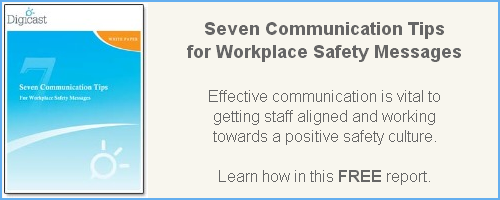
Despite what collaboration software experts would have you believe, few companies have big issues with trust within teams. When it comes to improving trust within...
 In the brilliant book, Made to Stick, by Chip and Dan Heath, they discussed a 1999 research project by a team of Israeli researchers. In this study, 200 award winning ads were classified into six templates.
In the brilliant book, Made to Stick, by Chip and Dan Heath, they discussed a 1999 research project by a team of Israeli researchers. In this study, 200 award winning ads were classified into six templates.
They then classified 200 unsuccessful ads and found that only 2% could be classified into the six templates.
But wait there's more...
The researchers brought in three groups of novices and got them to create three ads for three different products. The first group received information on the products and no ad design training. The second group was trained for two hours by a creativity instructor, while the third group was trained for two hours on the six templates.
For all groups, the best best ads were selected by a creative director and tested with consumers.
The group that was trained on the six templates was the clear winner with a 55% more positive attitude rating towards the product advertised and also rated 50% more for creativity by consumers.
Based on the research study, the Heath Brothers came up with six advertising principles. These can also be used to powerfully transform your workplace safety campaign to improve message recall and understanding. Here is a list of the SUCCES principles:
Simple - Use simple and easy to understand language. Only communicate one core message and make it as short as possible. Avoid decision paralysis where the more information a person is given, the harder it is for them to make a decision. Think metaphors and proverbs that contain highly informative information in a bite-sized take away.
Unexpected - Common sense is the enemy of sticky communication. When our brain's guessing machine fails, it wants to work out why it was unable to guess. This surprise grabs our attention, so that we can be prepared in the future. By trying to work out what went wrong, our brain is more likely to remember the information. A good example is the Enclave television ad.
Concrete - Information that is communicated with lots of words to describe say, a process, is called abstract. The information can be difficult for novices to understand. To help people understand the information you need to make it more real-life or concrete. Give real world examples, make comparisons to other similar things that people will understand, use visuals to explain such as photos, video and diagrams.
For example: A successful campaign that was undertaken to educate people about the high levels of saturated fat in movie popcorn was to compare the saturated fat content of a bag of popcorn as being equal to two big Macs. Telling people that they are eating 37g of saturated fat is abstract and has no real meaning, unless you're a dietician. Instead, talk in a language that people can understand, which in this case was comparing the fat content to a well known high fat product.
 Credibility - In Influence: The Psychology of Persuasion, Robert Cialdini talks about social proof. One way humans determine what is correct is to find out what other people think is correct. In particular, we view behaviour as more correct in a given situation to the degree that we see others performing it. Having credible spokespeople is important in any safety campaign. These can be anti-heros who have been injured by an unsafe practices that are better at motivating staff to change than senior management. After all, they've experienced first hand the consequences of poor safety and can talk about how it affected their life. Viewers will look to the spokesperson to model their own behaviour.
Credibility - In Influence: The Psychology of Persuasion, Robert Cialdini talks about social proof. One way humans determine what is correct is to find out what other people think is correct. In particular, we view behaviour as more correct in a given situation to the degree that we see others performing it. Having credible spokespeople is important in any safety campaign. These can be anti-heros who have been injured by an unsafe practices that are better at motivating staff to change than senior management. After all, they've experienced first hand the consequences of poor safety and can talk about how it affected their life. Viewers will look to the spokesperson to model their own behaviour.
Emotional - Despite economists wanting to believe that we make logical, unemotional decisions, the truth is hitting people's emotions is important for change. Giving people analytical, logical reasons to stay safe aren't always effective. Put emotion into your communication. Make people care. It can be as simple as talking about a person affected by poor safety. Humanise it. In the book, Transform Your Safety Communication, there is a chapter dedicated to helping safety professionals hit the emotional buttons on safety. You can find out more by downloading a free chapter.
Story - This leads us to using stories to communicate your messages. Stories are tremendously powerful and help provide an emotional connection to information. They are especially useful when your audience is resistant to change or in denial about the safety issues. Become a story finder in your company.
Sometimes you can't include all of these in your communication, but the more you can include the better.
The most powerful way is to get a credible spokesperson telling their story which covers three principles (eg: Credibility, Emotional, Story).
How can you start to incorporate more of these principles into your communication?


Despite what collaboration software experts would have you believe, few companies have big issues with trust within teams. When it comes to improving trust within...

Everything we do is communication. And it is no wonder that research studies point to 70% of workplace mistakes being caused by poor communication.
How we start our...